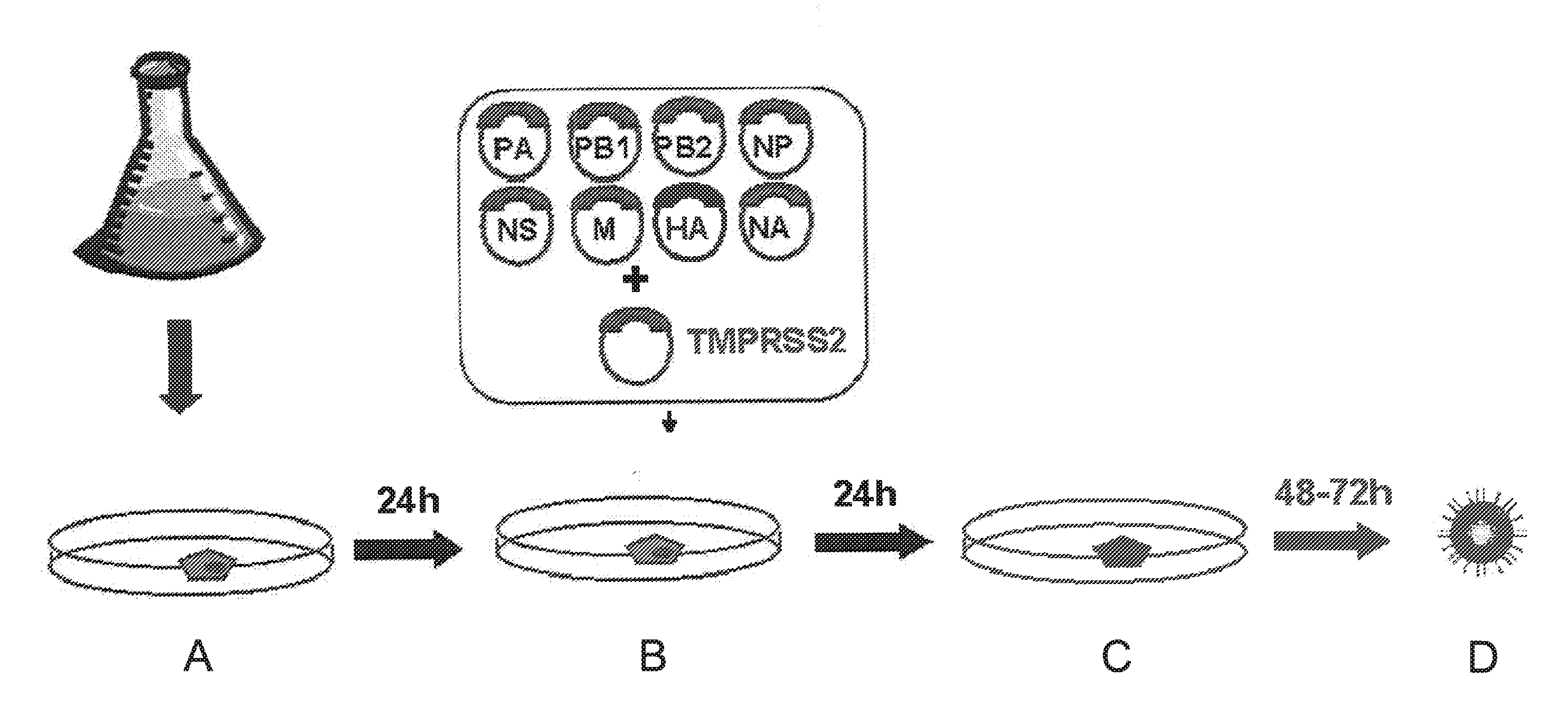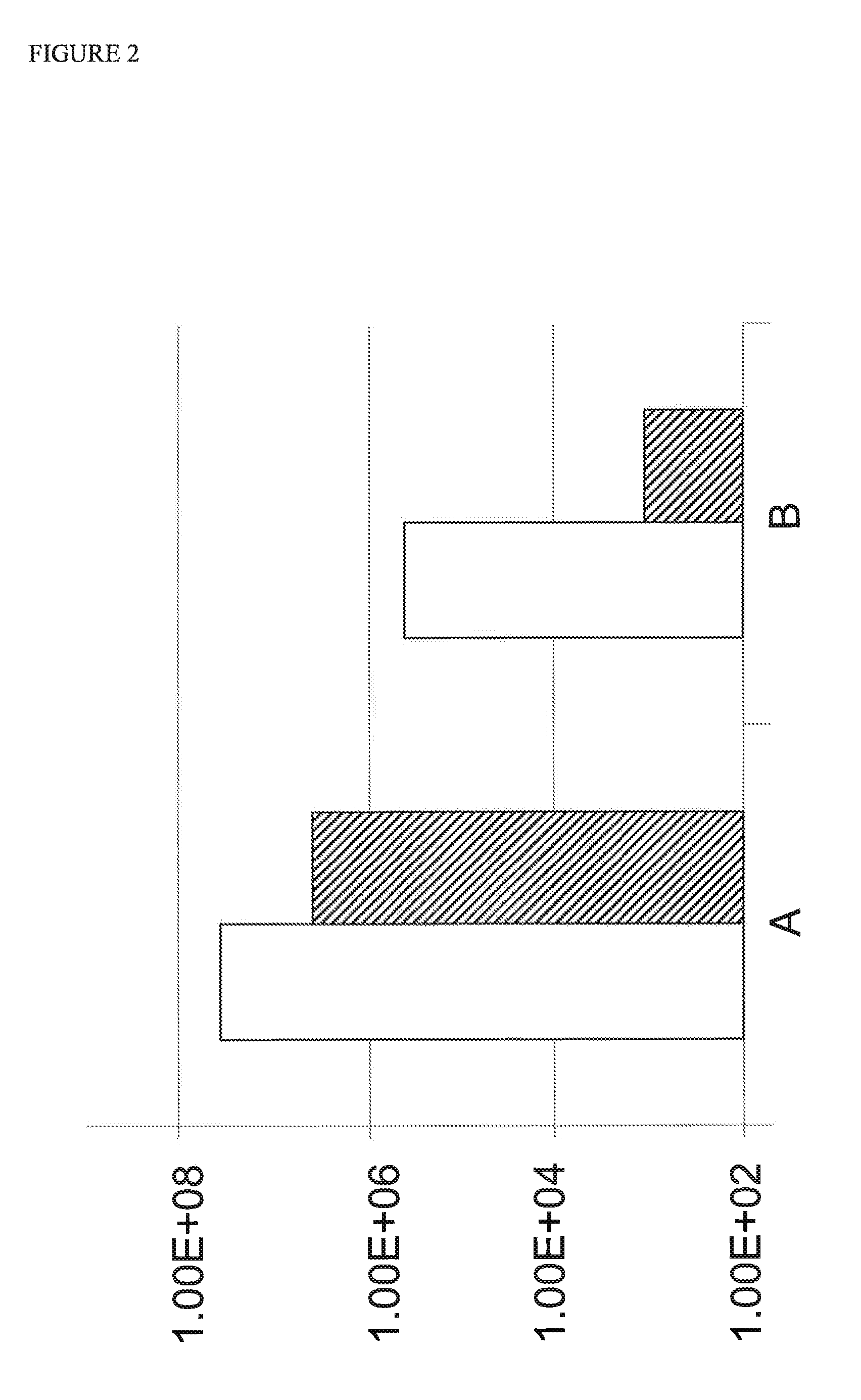Reverse genetics methods for virus rescue
- Summary
- Abstract
- Description
- Claims
- Application Information
AI Technical Summary
Benefits of technology
Problems solved by technology
Method used
Image
Examples
Embodiment Construction
[0005]The inventors have now surprisingly discovered that the poor efficiency of reverse genetics methods can be improved significantly by transfecting cells with the reverse genetics construct(s) and subsequently adding more cells to the transfected cells. The inventors surmise that the observed increase in efficiency is due to the fact that transfection is harmful to the cells. Thus, any viruses which are rescued need to expand in sick cells or wait until the virus is transferred to healthy cells. This results in a loss of viable virus. The addition of cells to the transfected host cells allows the rescued virus to multiply on a healthy cell substrate which increases the virus yield significantly.
[0006]In one embodiment, the invention provides a method for preparing a virus comprising the steps of (i) transfecting a culture of host cells with at least one expression construct encoding a viral RNA molecule; (ii) adding cells to the transfected host cells of (i) to provide a mixture...
PUM
 Login to View More
Login to View More Abstract
Description
Claims
Application Information
 Login to View More
Login to View More - R&D
- Intellectual Property
- Life Sciences
- Materials
- Tech Scout
- Unparalleled Data Quality
- Higher Quality Content
- 60% Fewer Hallucinations
Browse by: Latest US Patents, China's latest patents, Technical Efficacy Thesaurus, Application Domain, Technology Topic, Popular Technical Reports.
© 2025 PatSnap. All rights reserved.Legal|Privacy policy|Modern Slavery Act Transparency Statement|Sitemap|About US| Contact US: help@patsnap.com



